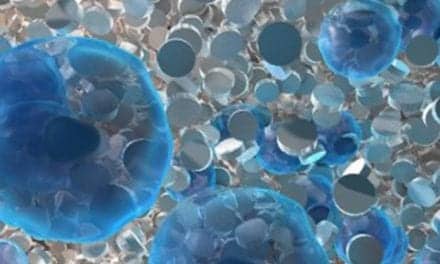A team of researchers with the Cumming School of Medicine’s Hotchkiss Brain Institute (HBI) and Stanford University have been investigating which brain circuits are changed by injury in order to develop targeted therapies to reset the brain to stop chronic pain.
“It’s a terrible situation for many people living with chronic pain, because there is often very little that works for them to control their pain,” Dr Gerald Zamponi, PhD, senior associate dean (research) and a professor in the departments of Physiology & Pharmacology and Cell Biology & Anatomy at the CSM, says in a media release from University of Calgary.
“This doesn’t just impact people who have experienced peripheral nerve damage. There are cases of people having a stroke and are experiencing severe pain afterward in another part of their body. It may also explain why some people who have lost a limb can still feel pain in the limb even though it’s no longer there.”
Working closely with Dr. Junting Huang, PhD, and Dr. Vinicius Gadotti, PhD, co-first authors on the study, along with Dr. Zizhen Zhang, PhD, the team utilized optogenetics to study the neuron connections in the brains of mice.
Optogenetics allow scientists to use light to target and control individual neurons in the brain. With this tool, researchers are able to map a pathway showing which neurons are communicating with each other to process a pain signal and then communicate this information all the way back through the spine where painful stimuli are first processed.
“We’ve known that certain parts of the brain are important for pain, but now we’ve been able to identify a long range circuit in the brain that carries the message and we’ve been able to show how it is altered during chronic pain states,” says Zamponi, who is also a member of the CSM’s Alberta Children’s Hospital Research Institute.
Much of the research for chronic pain has been focused on the spinal cord and targeting nerve fibers where the pain response is processed. Treatment with current pain relief medications is often ineffective and can have serious side effects. This new understanding of the pain-signaling circuit may allow scientists to develop new drug therapies and targeted brain stimulation treatments to address chronic nerve pain, and hopefully provide relief for pain sufferers.
Working with mice, Zamponi’s lab has proven that targeting certain pathways in the brain can interfere with the pain signal and stop pain sensation, the release explains.
“If you understand how the brain rewires itself, you can interfere with that and you can restore it. That’s important,” Zamponi comments. “If you think about it, there are some drugs you don’t want to give to kids who have chronic pain. What if you could non-invasively stimulate certain brain regions or inhibit them, and bring pain relief that way? I think it would be a tremendous, alternative approach to taking drugs.”
Zamponi expects the results the lab has seen in mice will be comparable in humans. While the human brain is very complex, the communication network is similar in the animal brain. Findings are published in Nature Neuroscience.
The Zamponi lab is already applying this research to investigate how this brain circuit interacts with other parts of the brain involved in more complex behaviors like the interaction between pain pathways and addiction, depression, and anxiety.
[Source(s): University of Calgary, Science Daily]





